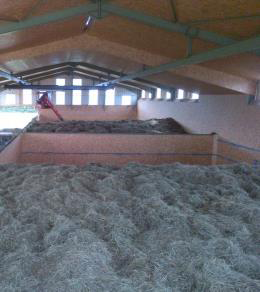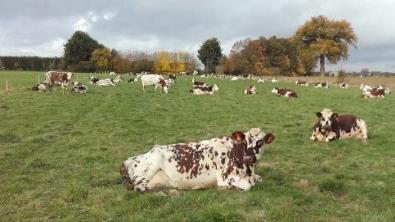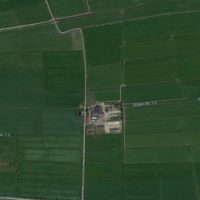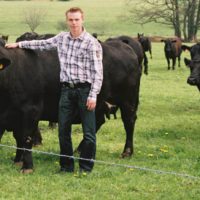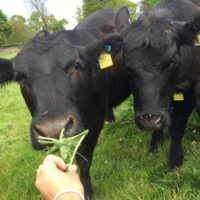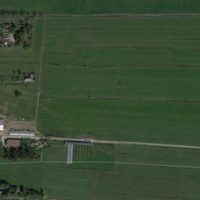Total autonomy based on grazing and a dryer in barn
Description
The farmers have implemented a consistent feeding system based on forage and concentrates autonomy. To reach this goal, they worked on different parts of the system:
- Use of 1-day rotational grazing. The access to the building has been tarred
- A building dedicated to drying the hay exists since 10 years. They thus have a good proficiency of hay value which is the base of winter feeding of the cows.
- Fodder beets are used on the farm (very productive: 22 000 feed unit/ha). The beets are entirely distributed in the trough and complemented with hay dried in the barn for winter feeding. They increase milk quality (protein and butyrous rates).
- Grasslands are composed with a complex mixture of grass and legumes to ob-tain a nitrogen-rich fodder. They are sowed at spring time under oat crop. Approximately 10 ha of alfalfa have been grown for 10 years, eather alone or in association with timothy and meadow fescue.
- Objective of protein autonomy to stop buying GMO soy. Since 2016, they have toasted fodder pea grown on the farm. This reduces cost compared to soy and the variability of the price is very small.
Reason for the innovation
- Economic feeding: 22€ for forage and 65€ for concentrates/1000 l of milk
- Food autonomy reached thanks to the maximization of grazing
- Use of simple and diversified feedings: grass, corn, spelled, peas, fodder beet
- Great attention to milk quality and productivity of the animals
- Taste for grasslands: 1 hour/day dedicated to grazing management
- The farmers like better to sell forage than increase the number of animals. Selling forage and concentrates provides complementary income and secure the system in dry years.
Farm description
Environment
The farm is located in the West part of France, in the department of Maine et Loire.
Soils: loamy-clay with 15% of clay, they are good farming lands (>1m of depth)
The climate is oceanic. The relief is flat with an average altitude of 60 m
Grassland management
- Grazing: is the base of dairy feeding system. Rotational grazing used since 2014. Cows are changing plot everyday. Each plot is 0,8 ha wide
- Grazing of dairy cows from mid-February to early December
- Limited fertilization: use of 50 kg of mineral N/ha/year + 10 t manure/year
Structure
- Annual Work Unit: 3,5 ; 2 brothers + 1,5 employed AWU
- Agricultural area: 155 ha UAA
- 82 ha of multispecies grasslands
- 11 ha of alfalfa
- 9 ha of corn for self-consumption
- 14 ha of fodder beet (included 7 ha sold)
- 12 ha of spelled (partly sold)
- 4 ha of barley + fodder peas (harvested in grains)
- 23 ha of cider apple trees (needs 3/4 AWU)
- Herd: 80 Normande dairy cows
- Stocking rate: 1.25 LU/ha main forage area
Animal performance
- Milk production per head: 6,500 L /year with 1.1 t/year of concentrates
- High protein and butyrous rates (BR>38 during winter 2016-2017)
Why it is working
The farmers are really driven by the proficiency of their production.
Every year, they conduct essays of grasslands mixture with different species and varieties and only keep the ones that satisfy them.
They have visited other farms before setting up the dryer in barn and the rotational grazing to help them make their choices. They were part of an exchange group between farmers on dryer in barn.
Calibration of the rations after the set up of the barn dryer was facilitated by an adviser who was interested in this technique.
The system is sustainable.
The farmers like to work with dryed forage.
Additional information
| Farming system | conventional farming |
|---|---|
| Domains of innovation | farm system, forage conservation technique, forage mixture, grazing management system |
| Main types of animal | dairy cattle |
| Country | France |
| Product type | Farmer portrait |
| Language | English, French |
